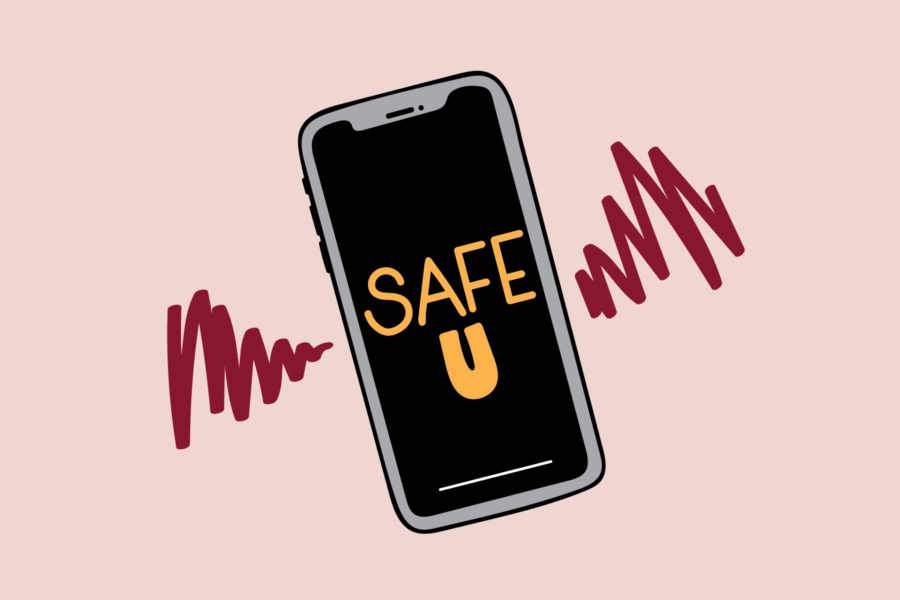Many students at the University of Minnesota find SAFE-U alerts to be helpful but think the alert system can be improved.
The University sends out alerts as soon as they know the basic information of the event or crime, meaning the time when an incident is reported can impact when SAFE-U alerts go out.
SAFE-U alerts from the University of Minnesota Police Department (UMPD) aim to inform students, faculty and staff of incidents and emergencies on campus. SAFE-U alerts are monitored by UMPD Chief Matt Clark.
There are outside ways students can learn about crime on campus, including the Citizen app and twitter accounts such as Crime Watch Minneapolis.
On March 21, there was an incident at the Washington Avenue bridge in the afternoon. No SAFE-U was sent out regarding the situation. The UMPD crime log labeled the incident as a “water emergency” on the daily crime log.
People became aware of the situation when the twitter account Crime Watch Minneapolis and the Citizen app reported there was a body found in the river.
SAFE-U notifications are released when there is a serious or ongoing threat on campus to anyone with a University email address, according to the University’s Safe Campus website. Sometimes a notification will be sent out regarding a situation off campus if it directly impacts the campus, but the notifications must abide by the Clery Act.
The Clery Act requires universities to report crime on campus and make that information available.
“I think the most important thing to note is that these notifications are required by federal law,” University Public Relations Director Jake Ricker said in an email statement. “The U of M and every other major university in the country has a notification system of some kind to comply with the Cleary Act.”
Students say the required alerts can be beneficial but also improved
Some students said it seemed like they had gotten more SAFE-U alerts this semester than last semester. As of April 24, there have been a total of 10 alerts sent out since the spring 2023 semester began on Jan.1 7. There were a total of 14 alerts sent out in the fall 2022 semester.
Seven of the nine SAFE-U alerts sent out this semester occurred after spring break, with the last five sent out in April.
At the public safety forum the University held in March, President Joan Gabel said crime rates have been trending down on and around campus.
Fourth-year student Hannah Rademacher said it is nice to know if there is a potentially dangerous or serious situation on campus.
“I have a little sister who’s a freshman and she lives on campus, and I live off campus,” Rademacher said. “So I like them because every time I get one, I text her and I’m like ‘Are you in this area? What’s going on?’”
Other students, like second-year student Ethan Barber, agreed with Rademacher and said they like to know what’s going on around campus.
“It works pretty well,” Barber said. “Sometimes I’m like, ‘this doesn’t seem relevant,’ but most of the time I’m glad I know rather than don’t.”
However, some students, such as second-year Aidan Cook, think the SAFE-U alert system is not as effective as it could be.
“I feel like they don’t do much,” Cook said. “They just kind of scare everyone and they just kind of go away right after that. I don’t think they accomplish anything.”
Second-year student Sam Burkholder agreed they are helpful but can be made more effective to help students avoid potentially dangerous areas.
“Obviously texts and emails are nice, but why not do an app that has a map so you can pinpoint if there’s a hotspot?” Burkholder asked.
First-year student Maddie Slininger said she wants SAFE-U notifications to be sent out faster, adding she usually hears about what’s going on before UMPD sends them out.
“Even if the University isn’t notified about the incident until days later, federal law requires a notice to be sent,” Ricker said. “There are instances where the University isn’t immediately aware of a given incident. Once the University is made aware of an incident or, when responding to a report, can confirm an incident, a SAFE-U notification is sent.”
Slininger said the alerts sometimes do not have enough information for her to understand exactly what is happening.
“Living in the dorms, it’s a little nerve-racking when alerts come out so late and you have no information,” Slininger said.
On April 14, a SAFE-U alert was sent out notifying students that a person had shot someone with a BB gun outside of Pioneer Hall. Slininger said she and her friends were near Pioneer Hall at the time and thought the SAFE-U did not help them.
“Because it was all nice out, we were all sitting outside and we’re like, ‘Oh my god, should we go in? What do we do?’” Slininger said.
According to the University’s Safe Campus website, SAFE-U alerts only give out the general information of a crime, and the information the alert provides is supposed to help people make decisions as to how to best protect themselves.
More information on SAFE-U alerts, including frequently asked questions, can be found at the University’s Safe Campus website. Past SAFE-U alerts can be found on the University Department of Public Safety website.






















